August and September brought an abundance of apples. Off of our two little trees planted only two years ago, we harvested 21 pounds of Miniature Red Delicious and Wolf River varieties. I specially planted the Wolf River to honor my Great-Grandmother Mabel Crook who wrote in a family heritage narrative to describe the many types of apples growing in their apple orchard in Green Lake Wisconsin, “There were Snow, Talman Sweet, Jonathan, Wolf River, Greening and Macintosh.”
In addition to the apples we picked from our yard, a friend gave us all the windfall apples they could pick too. Needless to say, we had enough apples for lots of WWII style creative storage!
First up, washing everything. I used a sink full of water mixed with a cup or two of distilled vinegar to rinse the apples.
I started out with canned Apple Pie Filling. It’s best to start by making the syrup. While it cooks you can core and peel the apples…lots and lots of apples.
When I had the jars stuffed full of the apples, I poured the syrup into the jars and then processed.
This recipe will need cornstarch added when I open the cans and use them. Cornstarch is not canning stable, according to the USDA.
Once I had finished a full kettle of Apple Pie Filling, I switched over to Applesauce. I added brown sugar to the apples and boiled them down. Next, I put them through my mill and added a little bit of leftover syrup.
Even after all of the canning, I still have leftover syrup. I’m saving it in my refrigerator to add to apple juice in small batches to make spiced apple cider.
Recipes:
Apple Pie Filling
- 4 1/2 cups white sugar
- 1 tablespoon ground cinnamon
- 1/4 teaspoon ground nutmeg
- 1 pinch ground cloves (optional)
- 2 teaspoons salt
- 5 cups water
- 3 tablespoons lemon juice
- 6 pounds apples, peeled and cored
In a large pan over medium heat, mix sugar, salt, cinnamon, cloves and nutmeg. Add 5 cups water and mix well. Cook and stir constantly until sugar is dissolved.
Stir frequently, boiling until mixture is thick and bubbly. Remove from heat and add the lemon juice.
Fill jars halfway with sliced apples. Then pour liquid into jars to about one inch from the top of the jar. Ladle the syrup over the apples, then add more apple sure to leave at least 1/2 inch of room between the filling and the jar top to allow for a little expansion.
Slide a thin plastic, silicone or wooden knife around the sides of the jar to remove air bubbles, then put the lids and rings on the jars.
Add a few cups of cold water to your boiling water bath to equalize the water temperature to the temps of the filled jars and place jars in the boiling water, making sure there is enough water to cover the jars with at least a 1/2 inch of water.
Bring canning water to a rolling boil. Once the water is at boiling, let the jars sit for 25 minutes.
Applesauce
Put about six cups of cored and peeled apples into Dutch Oven. Add about a cup of water or apple juice. Add juice of one lemon. Add 1/2 cup of brown or white sugar and about 1 T of cinnamon (to taste). You can also add ground cloves, allspice, or ground nutmeg — whatever you like! Stir the pot well and then cover for about 25 minutes.
At this point, you may be done! Or, you may want to put your apples through a mill or blender…whatever you prefer. Decide if you’d like to eat it right away or in smaller batches throughout the next year by processing in a water bath.
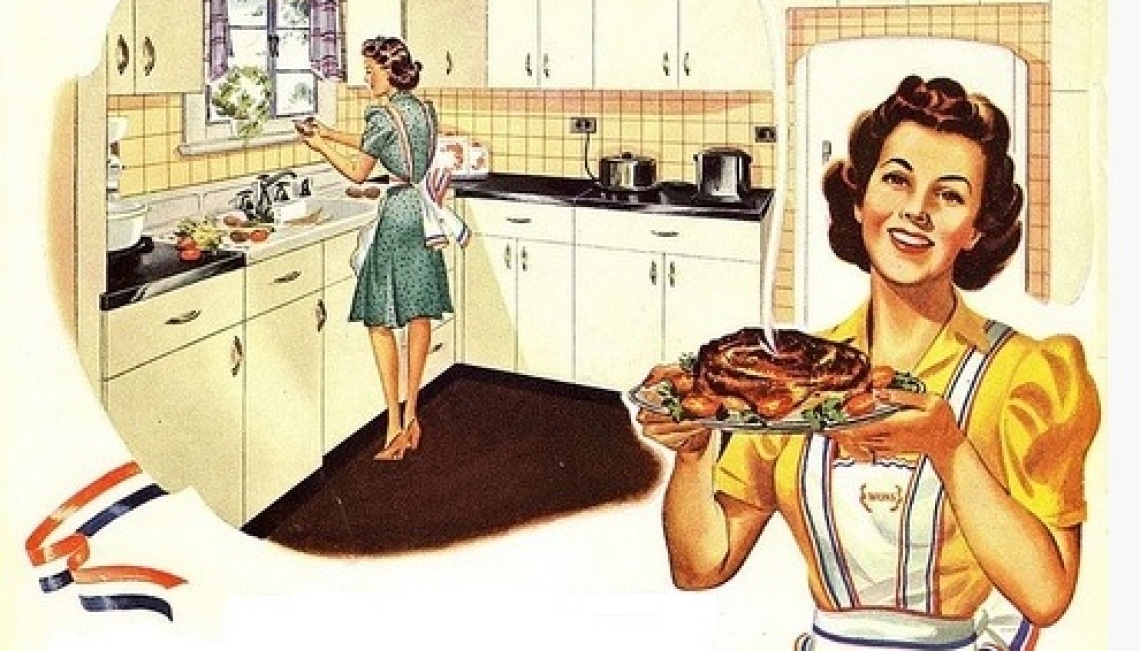


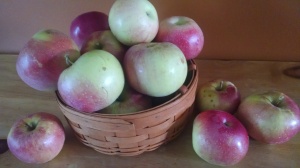
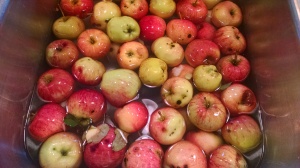
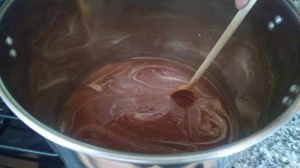
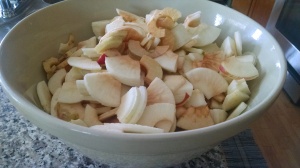
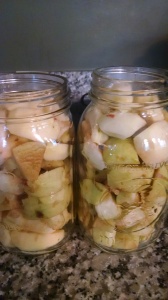
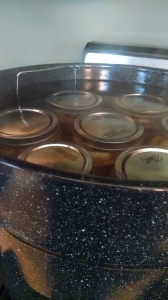
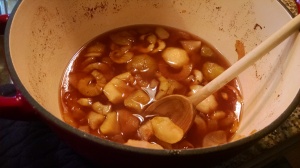


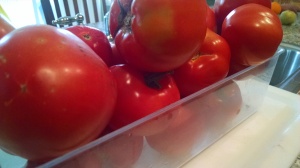
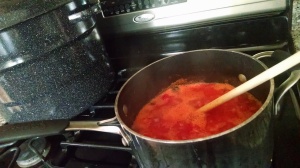
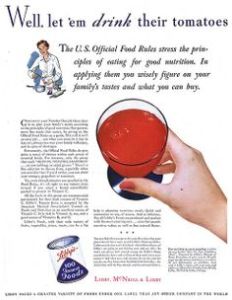
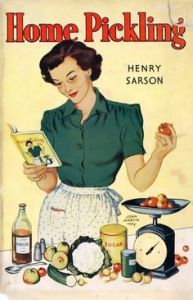

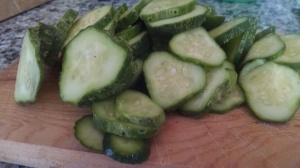
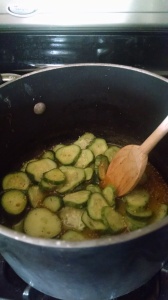
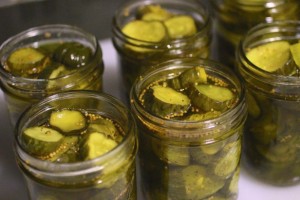
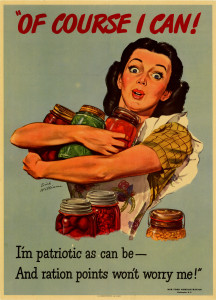
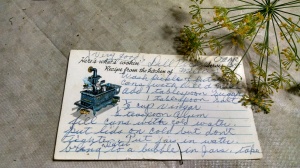
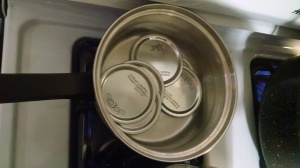
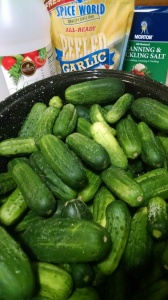
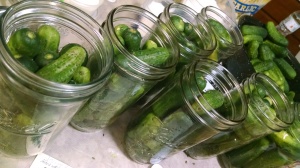
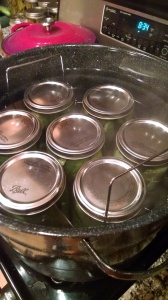
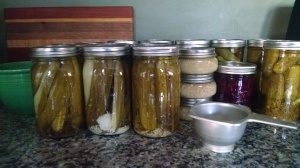
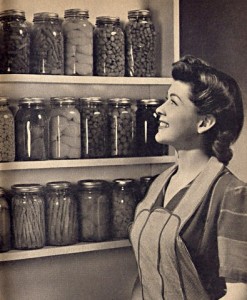
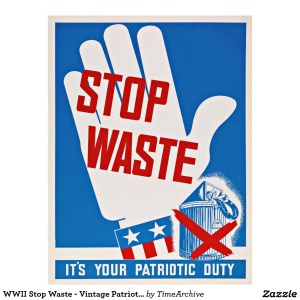
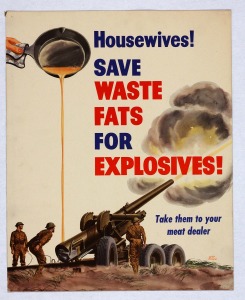
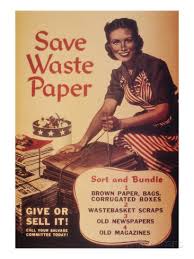
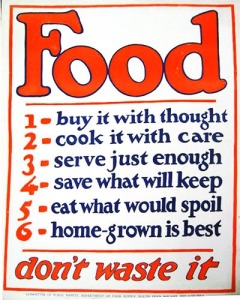
![IMG_20150719_153327814[1]](https://www.thewarinmykitchen.com/wp-content/uploads/2015/07/IMG_20150719_1533278141-168x300.jpg)
![IMG_20150719_153406378_HDR[1]](https://www.thewarinmykitchen.com/wp-content/uploads/2015/07/IMG_20150719_153406378_HDR1-168x300.jpg)
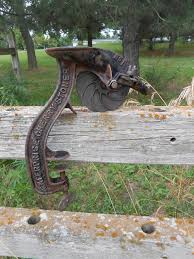
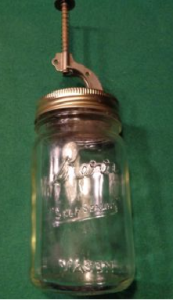

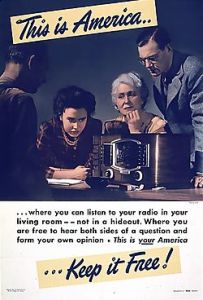
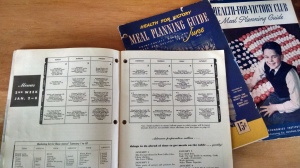

 every inch of lawn space for a Victory Garden. We’re only using about 1/8th of our yard for it and I can’t keep the weeds down.
every inch of lawn space for a Victory Garden. We’re only using about 1/8th of our yard for it and I can’t keep the weeds down.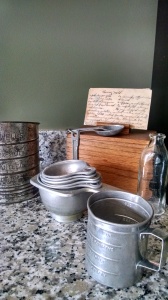

 made me realize I had been forgetting that every single kitchen I spent time in as a kid had a radio centered in the kitchen.
made me realize I had been forgetting that every single kitchen I spent time in as a kid had a radio centered in the kitchen.

